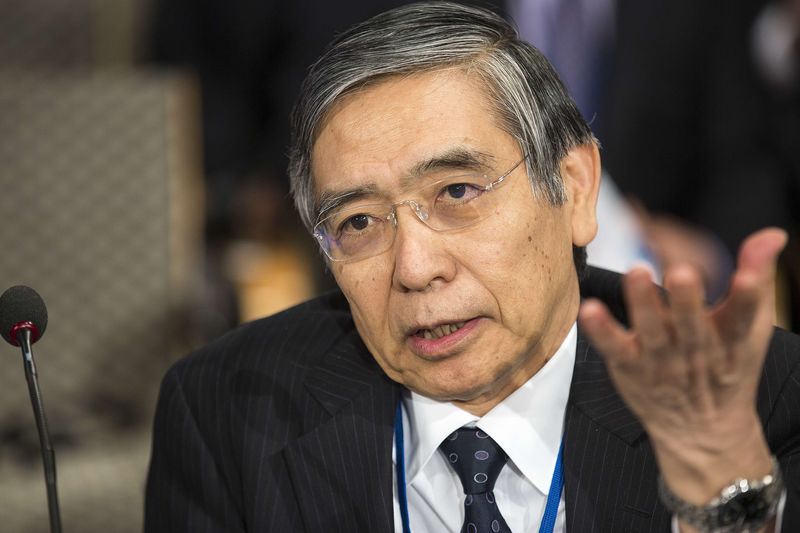(Bloomberg) -- Haruhiko Kuroda’s massive monetary stimulus has saved Japan’s government about $45 billion in borrowing costs, helping the world’s most indebted developed nation pay for its debt pile.
Japan paid 7.4 trillion yen ($68 billion) to service the 630 trillion yen in bonds it sold in the fiscal years 2013 through 2017. That means it saved 4.9 trillion yen, compared with what it would have paid if average borrowing costs in that period had been the same as in 2012.
Those savings are about enough to pay for Japan’s defense spending for a year, and were possible because the Bank of Japan’s massive bond purchases have driven borrowing costs to around, or even below, zero. As finance ministry bureaucrats plan next month’s medium-term economic plan, how much the nation can borrow, and how sustainable the existing debt is, will be a key question.
Though it is debt-burdened, the government has seen the cost of paying for that debt plateau over the long term. It estimates there will be 883 trillion yen worth of outstanding bonds at the end of this fiscal year, much larger than the size of the economy. Once you add in municipal debt and other borrowings, general government debt will be the highest in the developed world at about 2.4 times the size of gross domestic product, according to the International Monetary Fund.
By keeping borrowing costs low, the central bank aims to make it easier for companies to borrow and spend. It also relieves pressure on the government to achieve its target of stopping the increase in debt, as the BOJ has replaced the market in setting bond yields.
There are costs to Kuroda’s policies. By driving interest rates down to near zero, the BOJ has cut the returns that savers receive, affected the government’s own revenue from taxes on interest income and made it harder for insurance and pension companies to make enough returns to pay out.
"This can be seen as a hidden tax rise," said Koya Miyamae, senior fiscal analyst at SMBC Nikko Securities. "Bond buyers and savers are the victims here as they see their income cut, but the government gets a boost."
It’s also cutting into the net income of the BOJ itself, which in turn means it can’t pay as much money each year to the government as it once did. While the BOJ is meant to send most of its surplus to the government each year, it has been reducing that payment so it can increase the amount it has in reserve to cover any future losses on assets purchased as part of the stimulus program.
Though lower borrowing costs are saving the government money now, it could end up costing the government in the longer term by allowing it to delay cutting its stock of debt. That means it will pay more when rates do start rising.
If inflation does near the 2 percent target, the BOJ may start looking to normalize policy by cutting back asset purchases and raising interest rates. That would cause the cost of issuing new bonds to rise, worsening the nation’s fiscal position.
